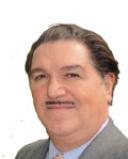Media
Kitty Genovese and George Senn: Who Recalls the Unsung Hero?
Let us not forget the bystander who did get involved.
Posted April 29, 2019 Reviewed by Davia Sills
The year 2019 marks the 55th anniversary of two infamous crimes in 1964. These both involved bystander behavior, but could not be more different at every turn: the crime itself, bystanders' actions, immediate outcomes, society's role, and the long-term impacts on society.
On March 13, 1964, Kitty Genovese (1935-1964) was murdered in front of her New York City home. Kitty must have felt so horribly alone that dark night, as her many screams went unanswered by dozens of neighbors. But a half-century later, on March 10, 2014, over 120 professionals from many cities filled an auditorium in New York City to share new facts and four new volumes about Kitty and her tragedy (Cook, 2014; Pelonero, 2014). Though Kitty's killer showed no remorse (Nilsson, 2019), millions of people continue to feel great sympathy for this young lady.
On August 28, 1964, George Senn (1925-1989) was at his apartment window in Upper Darby, PA, when he noticed a mob of 20 youths attacking a boy and three girls trapped in a car. George immediately phoned the police. After 10 minutes, matters worsened, and the police had not arrived, so George had a decision to make.
Like Kitty's witnesses, George could have easily shut his window and ignored the incident—sitting alone as he waited for his wife and infant son to return from the hospital. Instead, George used his skeet shotgun to courageously challenge the mob alone and rescue the four teens by firing the skeet pellets. When police had still not arrived, George walked to the police station to report the recent incident.
Incredibly, police did not praise George's heroism, but jailed George overnight for firing his skeet gun. Five months later, a jury acquitted George of the serious charge (assault with intent to kill) but convicted George of lesser charges (discharging a deadly weapon and aggravated assault). Delaware County Judge John V. Diggins did not set aside this jury's verdict, but suspended his sentence, so George paid only court costs ($491) plus his attorney's fee ($500). Meanwhile, among those who attacked the car, "13 were fined $50 each for disorderly conduct. None spent a minute in jail" (St. George, 1989).
All this while, local and national media uniformly supported George, and the victims' families agreed with one father that George "very obviously saved my son's life" (St. George, 1989). George was praised as a hero with civic virtue—a decorated Marine who fought in World War Two, graduated Yale with an economics degree in 1953, worked as a law-abiding business executive, and would simply never leave his neighbors in harm's way (Stone, 1981).
With vigorous media support (Bellune, 1981), George twice petitioned the state Board of Pardons in 1977 and 1980 to remove the convictions from his otherwise clean record. These requests were rejected. George's wife Mildred said, "What hurt most is that we were transferred from state to state for business, and each time he had to register as a criminal" (St. George, 1989). For years, the conviction remained an open wound for George's family. Even after George's passing in 1989, his widow Mildred and two children (Michael and Candy) continued to press for a public pardon.
Back in 2004, George's daughter Candy kindly agreed to drive her septuagenarian mom from her Connecticut home to speak about George in New York City at a March 9 forum at Fordham University, marking the 40th year of the Genovese tragedy. Sadly, that visit never occurred, due to icy roads that day. Of 70 people at that 2004 forum, 0 percent recognized the name, George Senn. Ten years later, in 2014, four authors released impressive new books that revealed new details on the 1964 Genovese tragedy. None of these tomes mentioned the name, George Senn.
Unlike courts, behavioral scientists view juries not so much as oracles of truth, but as flawed fact-finding committees which are not immune from errors in decision making. From 1989-2019, the Innocence Project has overturned over 320 false convictions by juries, based on scientific DNA evidence.
Why punish a hero? By August of 1964, the inactivity of the Genovese bystanders was widely known and condemned in media headlines worldwide—which makes the Senn case that much more perturbing. A half-century later, it is eerie to compare the many different aspects of these two 1964 incidents (in Table 1, below): A courageous bystander was punished and now forgotten, while the Genovese inaction continues to be a rallying cry for many positive social changes.
We can only imagine how wonderfully different history would have been as a killer prowled on March 13, 1964—if only George Senn was one of Kitty's neighbors on Austin Street when she cried out for a hero.
References
Bellune, J. (1981, April 12). Editorial: Beg for a pardon? He will not. The Bulletin, B7.
Cook, K. (2014). Kitty Genovese: The murder, the bystanders, the crime that changed America. New York: Norton.
Nilsson, J. (2019, March 15). Pen pals with the killer of Kitty Genovese. The Saturday Evening Post. Retrieved from: www.saturdayeveningpost.com/2019/03/pen-pals-with-the-killer-of-kitty-g…
Pelonero, C. (2014). Kitty Genovese: A true account of the public murder and its private consequences. New York: Skyhorse Publishing.
St. George, D. (1989, August 18). George Senn: Intervened and made headlines. Philadelphia Inquirer. Retrieved from http://articles.philly.com/1989-08-18/news/26149814_1_youths-street-fig…
Stone, M. (1981, April 20). Editorial: Dilemma of the Samaritan. U.S. News & World Report, 91-92.
https://www.upi.com/Archives/1981/06/22/George-R-Senn-He-Tried-to-Help/…


